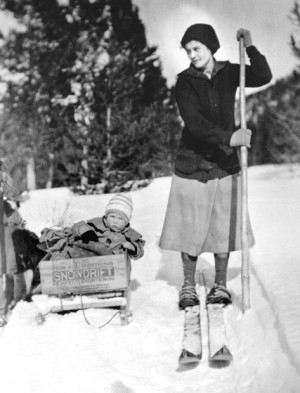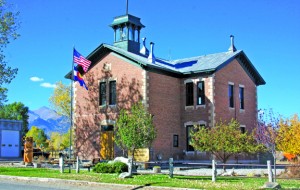by Virginia McConnell Simmons
At times, people like to feel assured that some things will never change. For instance, God’s in his heaven, the Big Dipper points north, and if you go east or west on the 39th parallel, you can take a swim somewhere around the Mediterranean Sea or fry an egg on a rock in Death Valley. Unless you are picky, and geographers do tend to be picky.
Take the 37th parallel north for instance. For 146 years this parallel has been a border running 761 miles between Kansas and Oklahoma, Colorado and New Mexico, and Utah and Arizona, but in 2009 the line was moved 365 feet south. Saving state legislatures and assessors’ offices a lot of trouble, the state line now is N 36?59.939. Whether the bronze disk marking the Four Corners will be moved remains to be seen.
This is not the first time the boundary has migrated. After U.S. Government surveyor E. N. Darling surveyed the boundary in 1868, the line along the 37th parallel was officially accepted by the General Land Office in 1869. That time, it caused more inconvenience, because it lopped off a whole town, Costilla, which was located in the Colorado Territory. Before 1861, though, the entire San Luis Valley, including Costilla and the other original settlements in today’s Colorado, were in New Mexico Territory.
Confused? For a moment, please visualize the beautiful San Luis Valley as one large, flattish valley that begins at the top of the Taos Plateau on the south end, roughly around the volcanic cones called Ute Peak on the east side of the Valley and San Antonio Mountain on the west side of the Valley, like portals, and ends at the north end at Poncha Pass. When the United States Army marched into Santa Fe in the 1840s, all of the San Luis Valley north to Poncha Pass became part of the U.S. Territory of New Mexico.
At Costilla Creek, the first settlement in the San Luis Valley appeared in 1848, failed on the first try, and was reestablished permanently the following year, 1849. This was the first settlement north of Taos and Questa. Within a short time, Costilla had a church, stores, outlying farms, and small placitas like La Plaza de Los Manzanares extended in each direction along Costilla Creek. Primarily Hispanic, Costilla soon had stores operated by Euro-American merchants and a church called San Miguel at one end of a large plaza, promising to become the principal town of the area. (Costilla preceded the Culebra settlers who made their first attempt to settle around San Luis in 1851 and succeeded in putting down roots 1852.) In later years, the plaza has severely deteriorated.
In the first years of their existence, Costilla, San Luis, and their little suburbs, were in the New Mexico Territory. In 1861, when the Colorado Territory was being organized, Costilla had enough importance in 1863 to be proposed as county seat, to be called San Miguel. Within a few days, the designation of county seat was changed to San Luis, however. Next, in 1869, Costilla found itself on the south side of the territorial boundary, with its territorial offices in Santa Fe and its county seat in Taos. This move also made the hamlet of Garcia (originally known as La Plaza de Los Manzanares, just across the state line from Costilla), the oldest settlement in Colorado. Perhaps the good people of Costilla and La Plaza de Manzanares always felt more at home south of the state line, regardless of political boundaries.
Across the San Luis Valley, we can note another change that resulted from the survey of 1868. When the village of Ortiz was established, about six miles from Conejos, the settlement extended to the south side of Rio San Antonio. The far side of the river was called Los Pinos. This change moved Hispanic ranchers at Los Pinos to Tierra Amarilla County, a long way from their county seat and, in some regards, a very long way from Denver, too.
Historian Virginia Simmons writes from the San Luis Valley.

